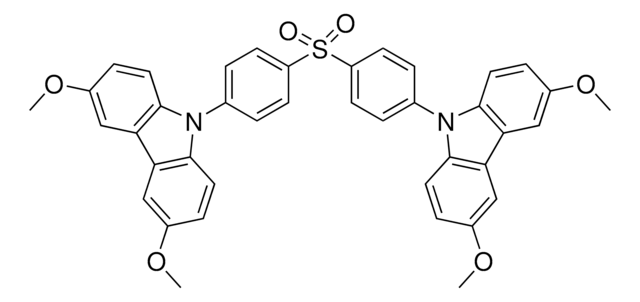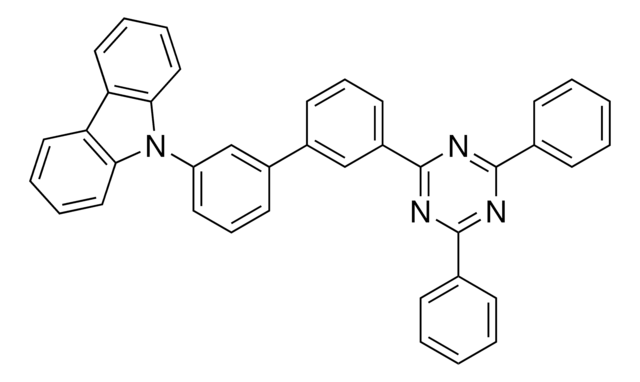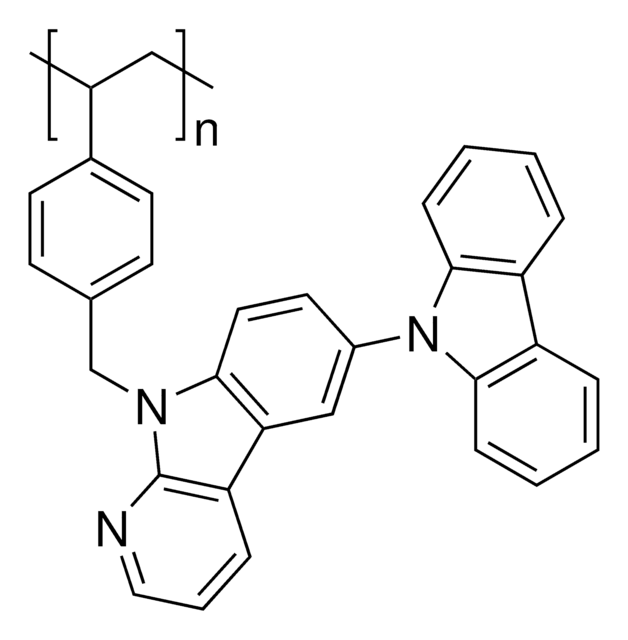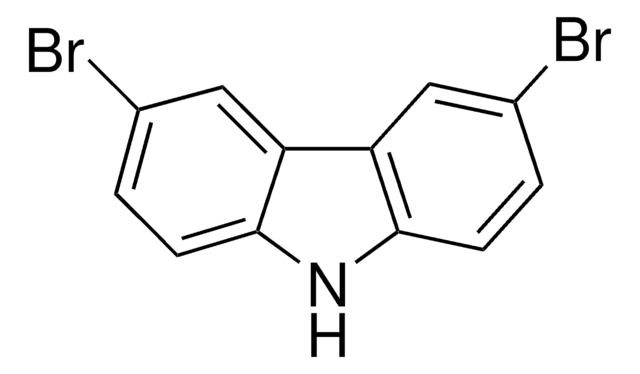932051
2,6-Bis(3-(9H-carbazol-9-yl)phenyl)pyridine
≥99% (HPLC)
Synonym(e):
26DCzPPy
About This Item
Empfohlene Produkte
Qualität
sublimed grade
Qualitätsniveau
Beschreibung
μh ≈ 1.0 x 10-5 cm2 V−1 s−1
μe ≈ 1.0 x 10-5 cm2 V−1 s−1
Assay
≥99% (HPLC)
Verlust
0.5% TGA, > 370 °C (weight loss)
Löslichkeit
chloroform: soluble
dichloromethane: soluble
toluene: soluble
Fluoreszenz
λem 410 nm±10 nm in dichloromethane
Energie der Orbitale
HOMO 6.05 eV
LUMO 2.56 eV
λ
in dichloromethane
UV-Absorption
λ: 239 nm±5 nm Amax
λ: 292 nm±5 nm Amax
SMILES String
C1(C2=CC=CC(N3C(C=CC=C4)=C4C5=C3C=CC=C5)=C2)=NC(C6=CC(N7C(C=CC=C8)=C8C9=C7C=CC=C9)=CC=C6)=CC=C1
InChI
1S/C41H27N3/c1-5-22-38-32(16-1)33-17-2-6-23-39(33)43(38)30-14-9-12-28(26-30)36-20-11-21-37(42-36)29-13-10-15-31(27-29)44-40-24-7-3-18-34(40)35-19-4-8-25-41(35)44/h1-27H
InChIKey
UFWDOFZYKRDHPB-UHFFFAOYSA-N
Suchen Sie nach ähnlichen Produkten? Aufrufen Leitfaden zum Produktvergleich
Verwandte Kategorien
Anwendung
Lagerklassenschlüssel
11 - Combustible Solids
WGK
WGK 3
Flammpunkt (°F)
Not applicable
Flammpunkt (°C)
Not applicable
Analysenzertifikate (COA)
Suchen Sie nach Analysenzertifikate (COA), indem Sie die Lot-/Chargennummer des Produkts eingeben. Lot- und Chargennummern sind auf dem Produktetikett hinter den Wörtern ‘Lot’ oder ‘Batch’ (Lot oder Charge) zu finden.
Besitzen Sie dieses Produkt bereits?
In der Dokumentenbibliothek finden Sie die Dokumentation zu den Produkten, die Sie kürzlich erworben haben.
Unser Team von Wissenschaftlern verfügt über Erfahrung in allen Forschungsbereichen einschließlich Life Science, Materialwissenschaften, chemischer Synthese, Chromatographie, Analytik und vielen mehr..
Setzen Sie sich mit dem technischen Dienst in Verbindung.








